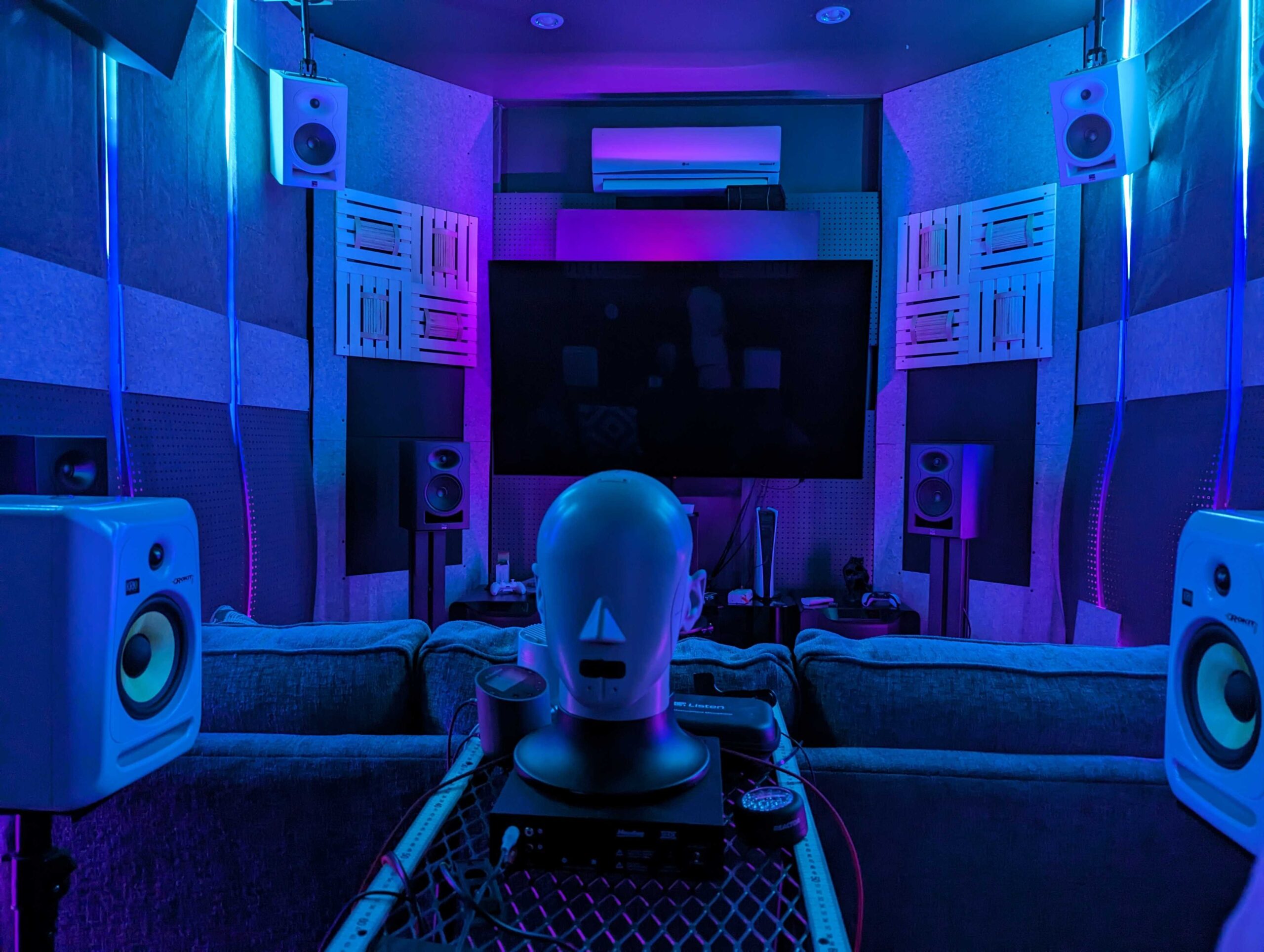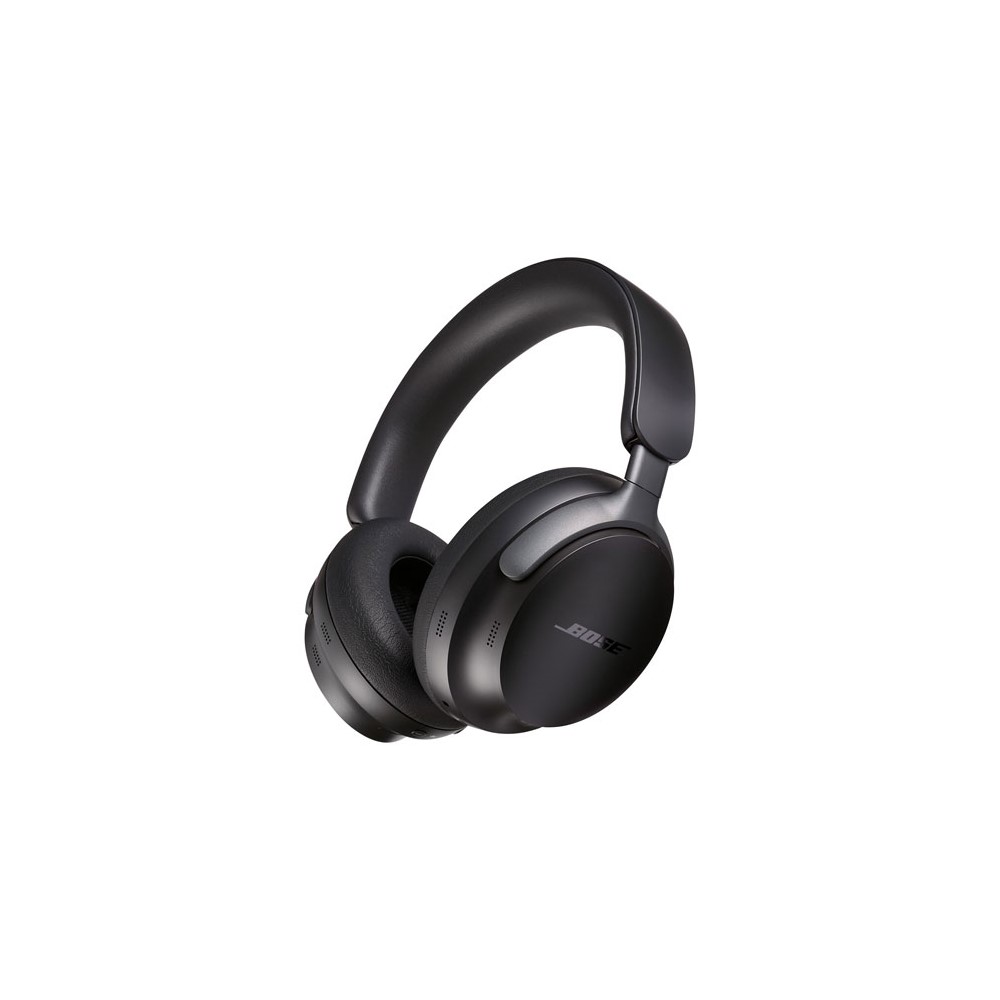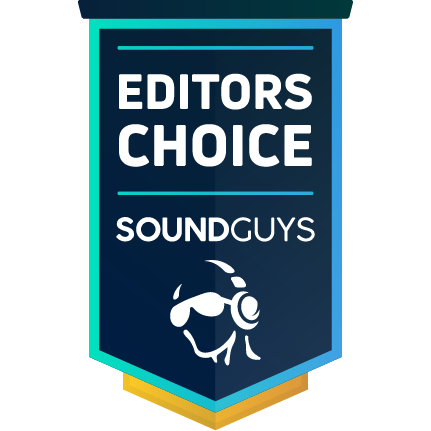All products featured are independently chosen by us. However, SoundGuys may receive a commission on orders placed through its retail links. See our ethics statement.
Best Headphones under $500
After hands-on testing, these are the headphones we’d actually recommend.
November 4, 2025
Adam is an Editor at SoundGuys specializing in gaming headsets, flagship headphones, and earbuds. A lifelong fan of video games and cinema, he brings a sharp ear and passion for immersive sound to every review. Beyond hardware, Adam writes thought-provoking features and opinion pieces that explore how audio tech shapes our lives. Armed with a BA in Cognitive Science, he pairs technical insight with a love for music’s psychological uplift. At home, he still rocks his original Sennheiser MOMENTUM over-ears, switches to Bose QuietComfort Ultra on flights, and relies on Galaxy Buds2 Pro while out and about.
Whether money’s no object or you just subscribe to the idea that spending big on headphones will pay off, there are a ton of different options in the high-end part of the audio market. Yes, many of them will be good, but not every pair of headphones at this price range are created equal. Some of these options will do better for specific needs than others.
We’ve tested hundreds of headphones in our lab, and below you’ll find our picks for the best headphones under $500 based on our reviews and extensive testing.
Each headphone receives a single overall headphone score, calculated from multiple testing data points: ANC, durability, isolation, value, design, connectivity, portability, battery life, features, and comfort.
Compare table
Filter
- Compare tableProductVotes
- 34 total votes34 total votes
$200
8.4
7.6
8.4
6.9
7.7
8.0
7.5
9.5
9.9
9.0
9.0
- 2 total votes2 total votes
$449
8.4
7.1
8.7
6.9
7.9
8.0
7.5
9.7
9.4
8.9
9.0
- 6 total votes6 total votes
$450
8.3
6.8
8.7
8.0
8.0
8.0
7.0
9.5
9.9
9.0
8.0
- 24 total votes24 total votes
$80
8.3
7.2
8.1
6.7
9.5
8.0
7.7
7.5
9.9
9.5
8.5
- 0 total votes0 total votes
$500
8.3
7.4
8.3
7.5
7.0
8.0
7.0
9.5
9.9
9.0
9.0
- 12 total votes12 total votes
$300
8.3
7.6
8.5
8.0
9.0
7.0
7.0
9.0
9.7
9.0
8.0
- 9 total votes9 total votes
$429
8.3
6.5
8.5
6.9
7.9
8.0
7.5
9.5
9.5
8.9
9.0
- 11 total votes11 total votes
$289
8.3
6.6
7.9
6.9
8.9
8.0
7.5
8.5
9.9
8.8
8.8
- 6 total votes6 total votes
$218
8.3
7.0
8.0
6.9
8.5
8.0
7.5
9.5
9.9
7.5
9.0
- 12 total votes12 total votes
$100
8.2
7.1
8.0
6.5
9.0
7.5
7.0
9.0
9.8
9.0
8.0
- 9 total votes9 total votes
$130
8.1
6.1
7.3
7.5
8.4
7.0
8.5
7.5
9.9
9.0
8.3
- 5 total votes5 total votes
$449
8.1
6.7
8.4
7.5
8.0
8.5
7.0
9.5
9.6
7.0
8.0
Product chart
In the chart above, you can see how each of the headphones compares in terms of price and performance.
To gather information about how well each of the earbuds and headphones work, we subject each product to a number of objective tests. We use a Bruel & Kjaer 5128 acoustic measurement system to test headphones and earbuds in our SoundGuys lab. The ear canal of the artificial head was created by averaging and smoothing 3D models of individual ear canal features from the MRI scans of 40 different people.

We perform the following testing to determine the best headphones and best earbuds:
- We run sequences to determine the best fit of the headphones, and if there are any manufacturing issues with the product.
- We measure the headphones’ performance and compare the frequency response to our industry-validated SoundGuys Headphone Preference Curve to give context to readers.
- To rate sound quality, we use the Multi-Dimensional Audio Quality Scores (MDAQS) algorithm from HEAD acoustics. These are virtual mean opinion scores as calculated by a powerful machine learning model based on the input of real listeners.
- We play several samples of shaped noise over loudspeakers to test noise canceling and record with our artificial head. We take samples with ANC on, ANC off, and with the headphones off the head. After subtracting the appropriate curves from each other, we can see how well the headphones block out noise.
- To evaluate microphone quality, we play pre-recorded spoken Harvard sentences from a calibrated artificial mouth in our test chamber, either with or without simulated background noises, simulated reverberant spaces, or artificial wind.
- To measure battery life, we play back music through the headphones or earbuds peaking at 75dB(SPL), a safe and realistic listening level.
In addition to objective testing, our team of audio experts uses each of the headphones and earbuds to evaluate the experience of using the product. By wearing the headphones in day-to-day use, we evaluate the comfort, noting any pain points. We also make sure to try out each of the features that the headphones have to offer, such as using the equalizer in the companion app.
Using a combination of subjective and objective testing, we score each product. To learn more about how we evaluate headphones and earbuds, check out our in-depth explainer on how we test.

Here at SoundGuys, we’ve been testing audio products for over a decade. Our team comprises audio product experts who have tested hundreds of different headphones, earbuds, and speakers. Moreover, our team comes from diverse backgrounds and a wealth of expertise, including audio engineering, film production, journalism, podcasting, music production, and even touring musicians.
Everything we recommend results from our objective measurements and great subjective experiences. Ultimately, we want you to enjoy your purchase or, at the very least, leave our site with a little more knowledge about the inner workings of audio. To see why you can trust us with your purchase decision, make sure to check out our ethics policy.
Poll
How much are you willing to spend on good headphones?
Best overall pick: Sony ULT WEAR

Sony ULT WEAR pairs practical folding convenience with a long runtime and usable ANC, making it our top pick for over-ear wireless headphones under $500. The pads are 40mm-wide and comfortable for long desk sessions, though the faux-leather padding can trap heat and the cups may slide if you don’t get a good fit; they fold flat into a case that holds a 1.3m 3.5mm cable and a USB charging cable. For connectivity the ULT WEAR offers Bluetooth 5.2 with SBC, AAC, and LDAC (and planned LC3 support), plus Multipoint and a wired 3.5mm option — there’s no USB-C audio pass-through. In our standardized battery test they lasted 32 hours and 35 minutes, and their active noise cancellation reliably attenuates more than 25 dB above about 80 Hz, which is useful for commutes and flights. The sound leans heavy on bass, so we recommend using the Sony app to tweak EQ; our MDAQS readings reflect that bass-forward tuning. The ULT WEAR also earned recognition for Best Battery Life, Best Over-Ear Headphones, and Best for Comfort in testing.Sourced from Sony ULT WEAR review – SoundGuys.
Best ANC pick: JBL Tour One M3
JBL Tour One M3 is built to compete with the top ANC options, delivering very strong noise cancellation and a full feature set for travelers. The headphones use eight microphones with windscreens, an internal DAC, and 40mm drivers to achieve top-tier ANC and reliable isolation, and battery life exceeded 55 hours in our testing with ANC on. Its standout is the JBL SMART Tx remote brick, which doubles as a transmitter and control interface so you can offload processing and use Auracast-style sharing; it’s a unique approach that adds flexibility for shared listening. Call quality benefits from the advanced microphone array and wind protection, making calls clearer in noisy environments. The Tour One M3 also picked up recognition for Best Call Quality and Best for iPhone users alongside its ANC honors.Sourced from JBL Tour One M3 review: The next generation of ANC – SoundGuys.
Best Value pick: JLab JBuds Lux ANC


JLab JBuds Lux ANC is a budget-friendly over-ear ANC option that delivers impressive battery life and a useful app for customization. Priced under $100, the JBuds Lux ANC lasted 44 hours and 22 minutes in our continuous playback test and supports fast charging that can provide several hours of listening from a short top-up. The ANC is noticeably weaker than premium competitors but is still effective for commuting and quieter transit systems, and the earcup seal helps block higher-frequency noise. The JLab app includes a 10-band EQ and adjustable ANC modes so you can tune the sound to your taste, which we recommend doing because the stock profile may not suit everyone. For its combination of runtime, app features, and price, the JBuds Lux ANC earns our Best Value recognition.Sourced from JLab JBuds Lux ANC review – SoundGuys.
Best Sound Quality pick: Bose QuietComfort Ultra


Bose QuietComfort Ultra emphasizes refined, well-balanced sound and personalization tools that make it a standout for listeners who prioritize fidelity. The headphones use CustomTune to adapt the profile to your ears and support aptX Lossless for compatible Android devices, while immersive audio settings provide a wider spatial effect for supported content. Connectivity is robust with Bluetooth 5.3 and options for wired listening via a 2.5mm-to-3.5mm cable or digital USB, and the cans weigh about 253 g for comfortable long-term wear. Bose’s ANC is very effective in real-world use, substantially reducing engine and transit noise, and the overall package rounds out as one of the best-sounding ANC headphones we tested. The QuietComfort Ultra also earned a nod as Best for Android users thanks to its codec support and platform features.Sourced from Bose QuietComfort Ultra Headphones review – SoundGuys.
Our verdict
For wireless and wired headphones under $500, these picks cover the common needs most buyers face: the Sony ULT WEAR is our all-around recommendation for commuters and travelers who want long battery life, solid ANC, and flexible wired and wireless connections, while the JBL Tour One M3 is the choice if you put the absolute best noise cancellation and call clarity first. The budget-minded should consider the JLab JBuds Lux ANC for its exceptional value and long runtime, and those chasing refined sound and Android codec support will appreciate the Bose QuietComfort Ultra.
Among the remaining headphones we tested, the Sennheiser ACCENTUM Plus offers a lightweight, comfortable design with very long battery life (over 53 hours) and decent ANC for its class; the Sennheiser MOMENTUM 4 Wireless stands out for exceptional battery endurance (about 56 hours), broad codec support, and handy app-driven features; and the Nothing Headphone (1) brings unique styling, IP52 water resistance, and deep EQ controls in its app for users who want a different look and granular tuning. Choose based on whether you value battery life, noise cancelation strength, sound tuning, or overall feature set within the wireless/wired headphone category and the $0–$500 range described in our filters.
FAQ
-
On-ear rest on your ears, smaller and more portable.
-
In-ear (earbuds) fit inside your ear canal, most compact.
-
Wired can offer more consistent sound quality and no battery worries.
-
Wireless adds freedom of movement, Bluetooth features, and portability.
-
Over-ear headphones with strong ANC work best on planes and trains.
-
Compact earbuds are great for commuting and portability.
Higher-priced models usually have better ANC, premium materials, wider soundstage, and extra features.
Active Noise Cancelling uses microphones to cancel out external noise for a quieter experience.
Open-back designs allow air and sound to pass through, creating a wider, natural soundstage but leaking sound. Closed-back isolate better and have more bass punch.
No, it’s a premium feature. Multipoint is useful if you switch often between laptop and phone.
Yes, by reducing background noise so you don’t need to turn up the volume. But listening too loud can still cause damage.
Isolation refers to the ability of your headphones to block outside noise from reaching your ears. This might sound like active noise cancelation, but it isn’t. Active noise canceling uses microphones to pick up the sounds that are going on around you and then uses clever processing to cancel them out. In physics, it’s called destructive interference, and you can learn more about that in our article on how noise canceling works, but that isn’t what isolation is.
Isolation is simply having a physical barrier between your ears and the outside noises. Every time you stuff your fingers in your ears, you’re isolating yourself. You might hear certain loud noises around you, but for the most part, sounds are blocked out. A good pair of over-ear headphones can do something similar. They’ll cover your ears and block noises that would otherwise interfere with the music you’re listening to.
Not yet. While Bluetooth has become way better and more convenient in the last few years, it still can’t compete on a technical level with wired over-ear headphones. Sure, we might be a little biased against removing the headphone jack. Still, even our objective testing of the LDAC codec (which is arguably one of the top transfer methods currently available) revealed that Bluetooth falls short. Of course, you probably won’t have to worry about it too much if you’re over the age of 24 because our hearing tends to go a lot sooner than you might realize, but it’s still something you should be aware of. At least for now, wired headphones still reign supreme.
Over-ear headphones generally offer superior sound quality due to their larger drivers and better isolation, which minimizes ambient noise and allows for a more immersive listening experience.
Thank you for being part of our community. Read our Comment Policy before posting.
